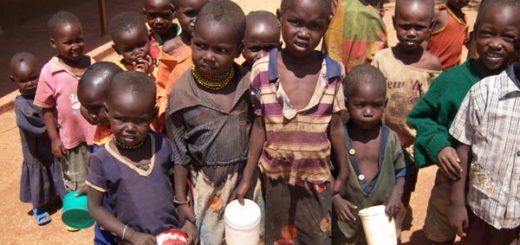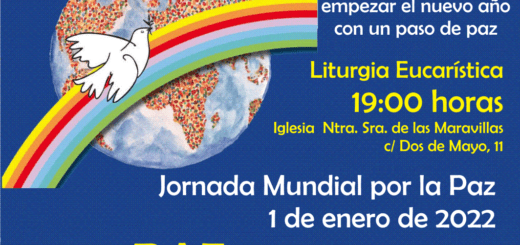The New York Times (1/9/2011): For Refugees, the Price of Dignity
For Refugees, the Price of Dignity
By TINA ROSENBERG
Somalia is now suffering its worst drought in 60 years. A quarter of the population has fled famine and conflict, heading west into Kenya. More than 1,300 people a day stream into the complex of refugee camps at Dadaab, Kenya, which is now housing more than 430,000 people in camps designed for 90,000. Many Somalis arrive near death after journeys of weeks with little food. Large numbers of them are children, often without parents.At Dadaab they receive food, medical care, basic shelter — the emergency relief they need. But they will probably spend years in that desolate grid of white tents, eating gruel that gets thinner toward the end of the month. The camp lacks the money to provide even subsistence rations. In exchange, the refugees give up their rights to move freely and to work.
The history of refugee camps tells us that they are likely to suffer cholera and other diseases and that rape and domestic violence are widespread. Refugees in Dadaab face lives of enforced idleness and dependency; children born there may grow up there. This is what we have come to expect for refugees: a place one step removed from hell.
Contrast Dadaab with the situation of the roughly 1.6 million Iraqi refugees in Syria, Lebanon and Jordan. Instead of living in camps, they live in Damascus, Aleppo, Beirut and Amman. They get help from the United Nations High Commissioner for Refugees, with an A.T.M. card that allows them to withdraw money every month. Some can work legally, but others work in the informal economy, as do locals.
They buy their own food and rent their own apartments. They use the local schools and health clinics. In areas where Iraqi refugees are concentrated enough to strain those services, the refugee agency spends money to refurbish and supply them, helping both the refugees and their neighbors.
Most Iraqi refugees are educated and middle class. They fled to relatively prosperous cities, and they get an unusually large amount of aid because of donations from the United States. They are in a very different position than the destitute Somali farmers.
But the policy of self-settlement outside camps has also been successful with the poor. Because it has shown results, it should be tried in a systemic way on a much larger scale — with Somali refugees, those now coming out of Syria and others who have already spent months or years in camps.
Sometimes it has been achieved through official policy, but more often by refugees on their own — they simply go where they want. If the United Nations refugee agency has programs to help them, they can register and get those services. But many simply choose to blend in with the local population. The vast majority of Angolans in Zambiaand refugees in Uganda from South Sudan and elsewhere, for example, have chosen to avoid camps and live, without help, on their own; both cases are considered successful. In many countries, refugees can receive aid while living in cities or local villages. Self-settlement can allow refugees to acquire savings and skills that will make them more productive when they return home. (Refugee status is temporary. When their country is declared safe that status expires, and with it the right to stay in their country of asylum.)
The most vulnerable and weakest might prefer camps. But most refugees, given a chance, prefer self-reliance, said Jeff Crisp, the head of policy development and evaluation at the United Nations refugee agency.
The camp model began at the end of World War II as a way to provide temporary housing for the displaced. “Over the years, camps have become the standard response,” Mr. Crisp said. “But they should be a last resort.”
Most refugees in displaced persons camps after World War II were quickly repatriated or resettled. The official fiction is that refugees today can expect the same. It is not true; the United States State Department says that more than 10 million refugees — two thirds of the world’s total — live in what is called “protracted refugee situations.” In 1993, refugee-producing situations like famine or war lasted an average of nine years each. By 2003, the average length was 17 years. For all their flaws, camps have persisted for powerful reasons. They are the most effective way to provide emergency aid to a vast number of people — Dadaab is saving hundreds of thousands of lives. The problem comes later; once built and populated, camps stay.
Vast bureaucracies and networks of aid workers now revolve around camps, where refugees and their plight can easily be made visible. Most crucial, the countries that host refugees prefer camps, and they have a veto. Host countries assume enormous and unfair burdens. Fewer than 7,000 Afghans have settled in the United States; over time Pakistan has hosted five million. Camps are built in the middle of nowhere so they can keep refugees away from local society, which is what host governments demand.
Camps also ensure that the refugees will be the United Nations refugee agency’s problem. Wealthy countries might promise to pay the costs of helping refugees outside camps, but host governments don’t believe them, said Lavinia Limón, president of the United States Committee for Refugees and Immigrants, which has led the campaign to end what it calls the “warehousing” of refugees. “Host countries often say that the idea of self-settlement is a plot to have refugees integrated into society and disappear, sticking the local government with the bill,” she said.
 James Hill for The New York TimesMany Iraqi refugees, such as this family, are living in low-rent apartments in Amman, Jordan.
James Hill for The New York TimesMany Iraqi refugees, such as this family, are living in low-rent apartments in Amman, Jordan.Iraqi refugees managed to avoid being settled in camps because many had left for Amman and Damascus before camps were even considered. Nor did the United States want to call attention to the fact that 40 percent of Iraq’s professional class had fled.
The world has taken notice of the policy’s success. In 2009, the refugee agency decided to help in urban areas, but host countries have resisted. Self-settlement would almost certainly cost less than camps: help would merely supplement what refugees earn, and there would be no need to feed them or build complex infrastructure.
It is a cruel irony that host governments have an interest in camps being miserable — on the theory that the worse off the refugees are, the more likely they are to return home. But it’s not clear that people in camps are more likely to repatriate than those who self-settle. The Committee for Refugees and Immigrants argues that refugees should be able to go where they want. They would get some special services — counseling, support groups, drop-in centers. But they would use the same schools and health clinics as the local population. The government would send the bill to donors and with that money expand and improve those schools and clinics. Donors would also pay nongovernmental groups to run projects — microcredit, for example — that would help refugees and their hosts.
A State Department official said that American humanitarian aid is doing this in several countries — notably in Pakistan. It is not easy work; in many cases a refugee becomes just one more resident of vast urban slums, and development projects in poor countries do not have a perfect record.
But it is at least the sort of help that offers a chance to produce something lasting; merely keeping people barely alive year after year does not.












